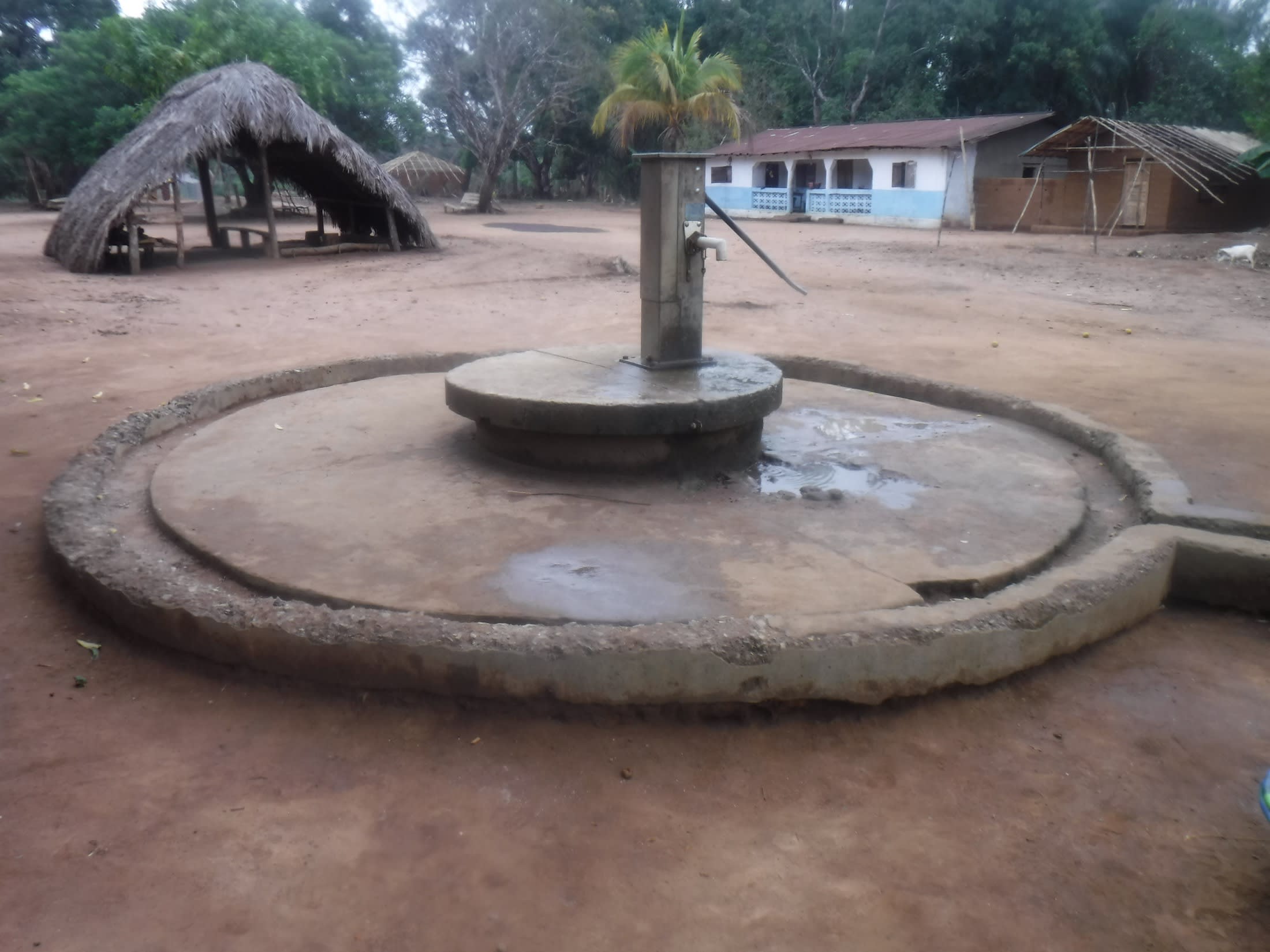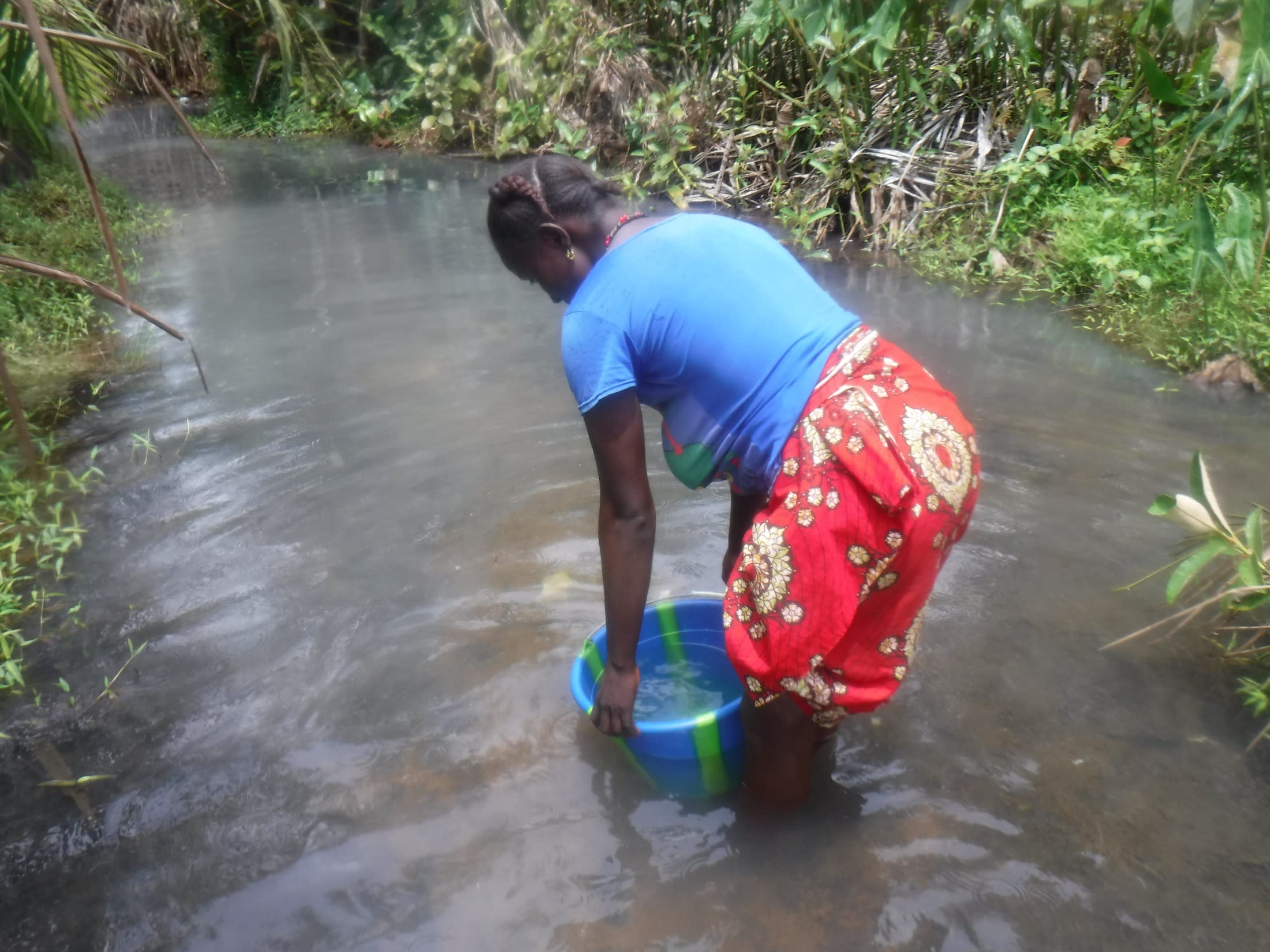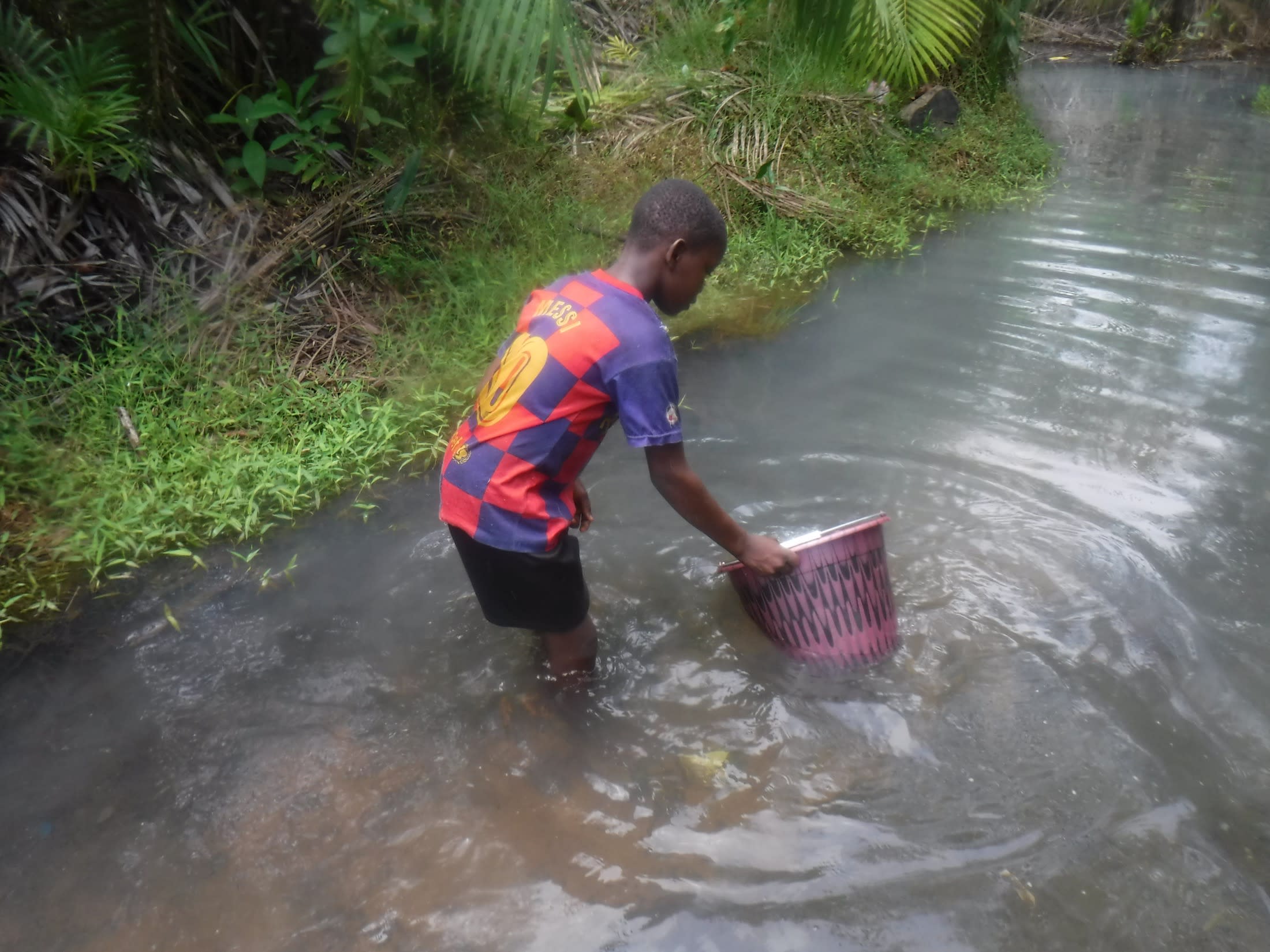February, 2024: Yemiya Community Well Rehabilitation Complete!
We are excited to share that a safe, reliable water point at Yemiya Community in Sierra Leone is now providing clean water to community members! We also conducted hygiene and sanitation training, which focused on healthy practices such as handwashing and using latrines.
Farmer Aminata Mansaray, 25, shared, "As a parent, the first thing I think about is the well-being of my children. Anything that reduces the chances of illnesses is a blessing for all of us. I will go to the end of the world to find a better way of helping my children to become productive members of society. That can only happen if they have good health."

Aminata drinking clean water!
"The goals I would like to achieve are to increase the number of vegetables in my garden. Not drinking swamp water is also a goal that was long coming. As a parent, nothing makes me happier than to know that my children are fed, safe, and have access to clean and safe drinking water. Thank you for providing a safe water source for our village. There will be no more swamp water, no more going to school late for the children, and best of all, the best water I have ever had is just a step away from my house," she continued.
Children were just as excited as the adults.
12-year-old Unisa K., a sixth grader at DEC Forikolo Primary School, shared, "Every day, I walk two miles to school and two miles back home. As a boy growing up in a village, I have [the] responsibility meant for a grown man, but I have no choice but to assist my parents to take care of the home. Access to reliable and safe drinking water from this source will greatly improve my life by reducing the time I spend going to the swamp. It will also improve my life by giving me the opportunity to study during the day. In the past, the minute I got home from school, I would take off my uniform and take several containers to fetch water. That used to take a very long time. Now my life will be easier."

Unisa using the new well.
"The time I have now will be between my studies and helping my parents earn more money to take care of the home. I look forward to a year in junior secondary school. As children in the village, most of our free time is spent helping our parents put food on the table. My father had me in his old age and relies on me to help with working on the farm. I pray to God that one day, my father can afford to help me live my dream of becoming a big businessman. To be a successful businessman, I have to go to school and study business. I told my mother of my dream of building a big house with electricity for her. She just laughs and says, "If God willing". I look at my mother and feel happy for all the times she stays up late trying to prepare food for us. I know God will bless me to take care of my parents," concluded Unisa.
We held a dedication ceremony to officially hand over the well to the community members. Several local dignitaries attended the ceremony, including representatives from the Ministry of Water Resources and Port Loko District Council. Each official gave a short speech thanking everyone who contributed to the rehabilitation of the water project and reminding everyone to take good care of it. Then, Aminata and Unisa made statements on their community's behalf.

Mr. Osman Fofaneh celebrates with the Yemiya Community.
The ceremony concluded with celebration, singing, and dancing. It is common for the community of Yemiya to break out singing and dancing with minimal instruments. Their songs only need a chorus, some pot covers, and empty rubber buckets with sticks to make powerful songs. The members of the Water User Committee are the custodians of the water point. The committee is made up of 9 members duly elected by their peers. They were given certificates for attending and participating in the three days of the hygiene training.
Clean Water Restored
The drill team arrived the day before beginning work. They set up camp and unpacked all their tools and supplies to prepare for drilling the next day. The community provided space for the team to store their belongings and meals for the duration of their stay. The following day, the work began.
First, we raised the tripod, the structure we use to hold and maneuver each drilling tool. Next, we measured the well's original depth. We then socketed the pipes and installed a casing.

Setting up the tripod.
Finally, we lined up the drill rods and started to drill! We reached a final depth of 22 meters with water at 17 meters. The hand-drill method allowed the team to install the cylinder far below the aquifer so that the community has excellent water access throughout the year.

Drilling begins!
With drilling complete, we installed screening and a filter pack to keep out debris when the water is pumped. We then cemented an iron rod to the well lining and fixed it with an iron collar at the top.
Next, we bailed the well by hand for three days and flushed it, clearing any debris generated by the drilling process. Finally, we tested the yield to ensure the well would provide clean water with minimal effort at the pump.

Yield test.
As the project neared completion, we built a new cement platform, walls, and drainage system around the well to seal it off from surface-level contaminants. The drainage system helps to redirect runoff and spilled water to help avoid standing water at the well, which can be uncomfortable and unhygienic and a breeding ground for disease-carrying mosquitoes.

The well is now fully rehabilitated!
At last, we installed the pump and conducted a water quality test. The test results showed that this was clean water fit for drinking!
New Knowledge
Before conducting any hygiene training, we called and visited the local water user committee to understand the community's challenges and lack of sanitation facilities. We shared the findings from our discussions with the committee members to help them make the necessary adjustments before the training began. For example, we identified households without handwashing stations or ones that may need to repair their latrines. With this information, community members worked together to improve hygiene and sanitation at home.

Community members learn about safe hygiene practices.
After this preparatory period, we scheduled a time when members from each household using the water point could attend a three-day hygiene and sanitation training. We then dispatched our teams to the agreed-upon location to hold the meeting.
Training topics covered included handwashing and tippy taps, good and bad hygiene habits, teen pregnancy, worms and parasites, proper dental hygiene, menstrual hygiene, proper care of the well's pump, keeping the water clean, the cost recovery system, the importance of using dish racks and clotheslines, the importance of toilets, keeping latrines clean, balanced diets, the diarrhea doll, and disease transmission and prevention, COVID-19, Ebola, Hepatitis, HIV and AIDS.

Dental hygiene lesson.
A meaningful training topic was disease transmission routes. The community engaged in a lively discussion regarding this topic that was informative and gave them a new perspective that will change how they live their lives, hopefully reducing the time and money wasted on illness and giving them even more ability to make a bright future for themselves.

Disease transmission training.
"The training was very valuable to me. Through the new topics I have learned, I will reduce the number of hospital visits my family makes to the local clinic. Most of the water illnesses that affect most of us in the community could be prevented if only we as a community improve how we handle our food and drinking water. Not only are we taught about the safe water chain, but we are also taught to immediately take any sick person to the hospital or clinic instead of the native medicines we normally use. Most of us knew what needed to be done to improve the sanitation condition of the village but just did not think it was important. Finally, everything was laid out, and we took responsibility for our lives and the lives of our children by making wise decisions when it comes to improving the hygiene and sanitation of the village," shared Aminata.

Aminata (purple shirt) is seen dancing in celebration.
Conclusion
This project required a substantial collaboration between our staff, our in-country teams, and the community members. When an issue arises concerning the well, community members are equipped with the necessary skills to rectify the problem and ensure the water point works appropriately. However, if the issue is beyond their capabilities, they can contact their local field officers to assist them.
Also, we will continue to offer them unmatchable support as a part of our monitoring and maintenance program. We walk with each community, problem-solving together when they face challenges with functionality, seasonality, or water quality. Together, all these components help us strive for enduring access to reliable, clean, and safe water for this community.
With your contribution, one more piece has been added to a large puzzle of water projects. In Kenya, Uganda, and Sierra Leone, we're working toward complete coverage. That means reliable, maintained water sources within a 30-minute round trip for each community, household, school, and health center. With this in mind, search through our upcoming projects to see which community you can help next!
Thank you for making all of this possible!










 Borehole Well and Hand Pump
Borehole Well and Hand Pump




























